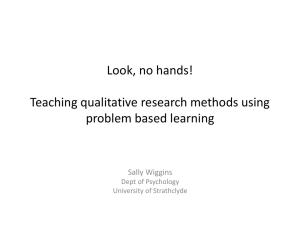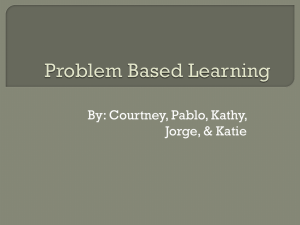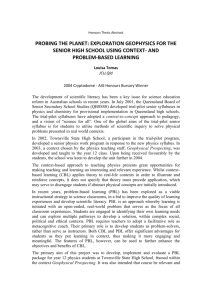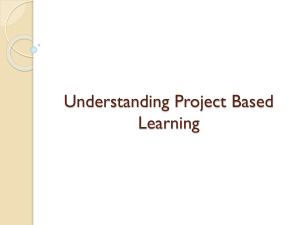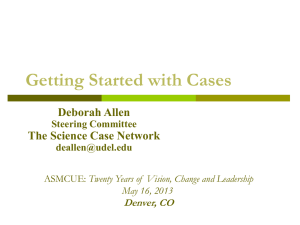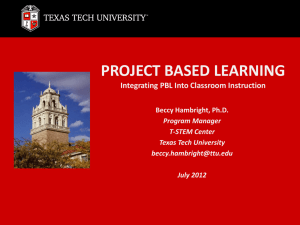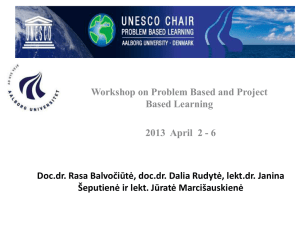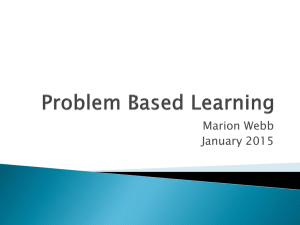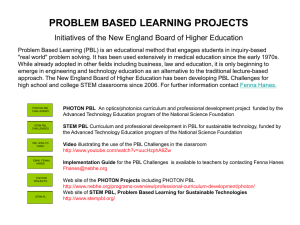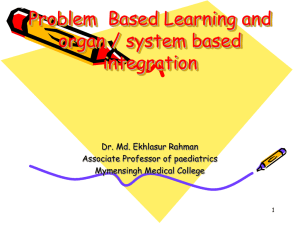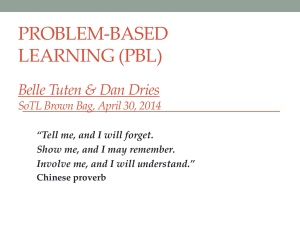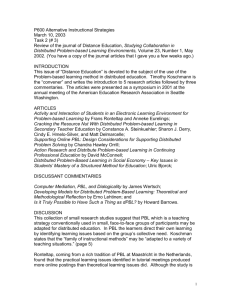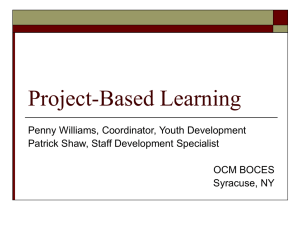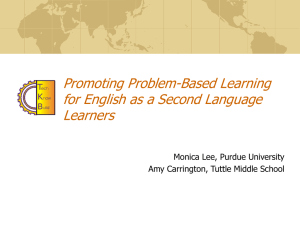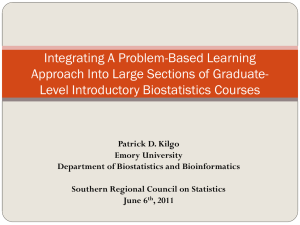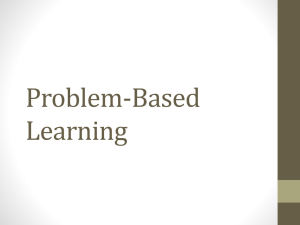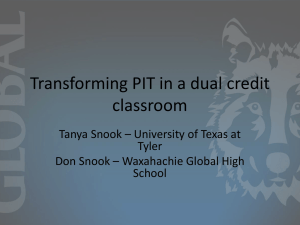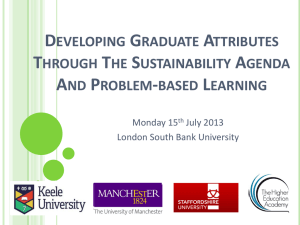Problem-Based Learning (PBL) Tutorial
advertisement
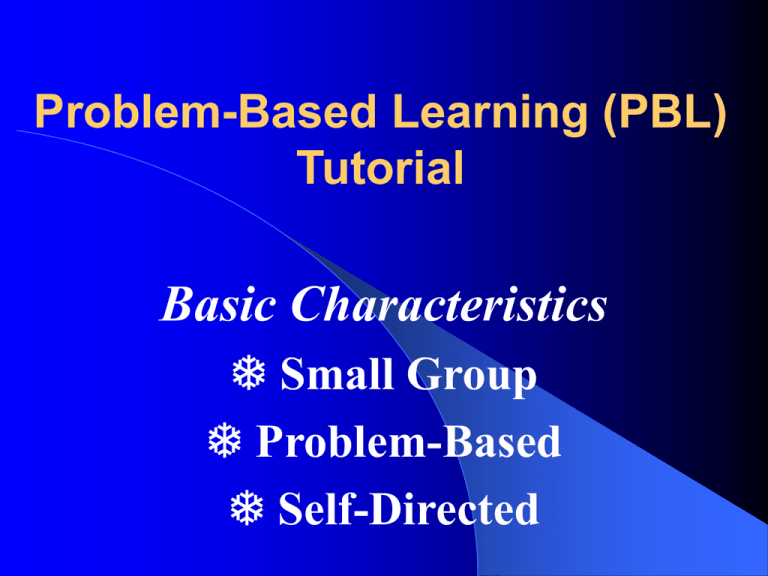
Problem-Based Learning (PBL) Tutorial Basic Characteristics T Small Group T Problem-Based T Self-Directed Problem-Based Learning (PBL) Tutorial Group Dynamics T T T Non-Threatening, Co-operative Atmosphere Tutor’s Role: Facilitative and Supportive Open Feed-Back to Each Other about Performance Problem-Based Learning (PBL) Tutorial Problem-Based T T T T The use of realistic (e.g. clinical) problems Emphasis is not on solving the problem Hypothesis and issue generation Sharing of learning burdens Problem-Based Learning (PBL) Tutorial Self-Directed Learning T T T T T You learn what you need Building of new knowledge on existing knowledge Learn to use different resources Learn time-management skills Take responsibility for one’s learning Advantages of PBL T T T T T T Motivation to learn is self-imposed Building of new knowledge on existing one (depth) Integration and application of knowledge (problem-solving) Wider coverage of the topic (big picture) Development of other skills (e.g. inquiry, critical appraisal, communication, group) Life-long learner Disadvantages of PBL T T T T T Lack of traditional structure and progression Perceived lack of depth in the knowledge acquired Too much time is spent in a tutorial “talking” It is hard to fail a student You need more teachers Why use PBL? T T T T T T This is how we as adults learn It is the most practical and efficient way of learning We do this in our daily professional and personal lives Learning is not static, but a dynamic process Develop a life-long learning attitude Develop group and interpersonal skills PBL is a World-Wide Trend T In the U.S.: New Mexico, Michigan State, Bowman Gray, Rush, Tufts, Harvard and Southern Illinois T Countries: Australia, Bahrain, Brazil, Chile, Egypt, Great Britain, Hong Kong, Indonesia, Malaysia, Netherlands, Nigeria, Philippines, Sweden, Switzerland, and Taiwan Movement Behind PBL T GPEP Report (General Professional Education of the Physicians and College Preparation for Medicine) in 1984 physicians need to continue to acquire new knowledge and skills life-long learning skills active, independent, self-directed learning develop ability to identify, formulate, and solve problems; to grasp and use basic concepts and principles, and to gather and assess data rigorously and critically Recent Movement Behind PBL T British General Medical Council position paper “Tomorrow’s Doctors” 1993/94 Reduce burden of factual information Core curriculum should be system-based and integrated – eliminate division of pre-clinical/clinical and department-based courses Outcome: Are the Students Better? T T T Students from PBL programs tend to take up specialty and academic posts Knowledge on the latest treatment guidelines (e.g. hypertension) is better than graduates of traditional programs Learning is more fun for the students and faculty Why Is PBL Not Widely Used? T T T T T It involves too much work! It affects the funding of departments Some teachers are resistant to change Students are perceived as not mature enough to handle this Not enough coverage of basic sciences Components of a PBL Tutorial T T T T T Problem Identification Hypothesis Generation Generation of Learning Issues Inquiry Strategy: Setting of Group and Personal Objectives Revisiting the Problem, Sharing of Information Group Process and Roles T T T T T T T Initial Growing Process Separation of Personal vs. Group Objectives Balance between Vocal and Quiet Members Resolution of Conflicts Emergence of Group Leader (Time-Keeper) Value Other Group Members’ Opinions Conversion of a Group into a Team A Good Working Group T Equal participation and equal responsibilities T Rotation of Leadership Role T Supportive and Facilitative of each other’s learning T Constructive Evaluation of Self and Group T Creative Handling of Difficult Behaviour T Free sharing of information History of McMaster Medical School T T T T Planning started in 1966, first class of 30 students enrolled in 1969 3-year program, inter-disciplinary without discipline-oriented subjects, emphasis on problem-solving, integrated approach to human biology Major revision in 1983, 2000. Current class = 118, more female than male students
